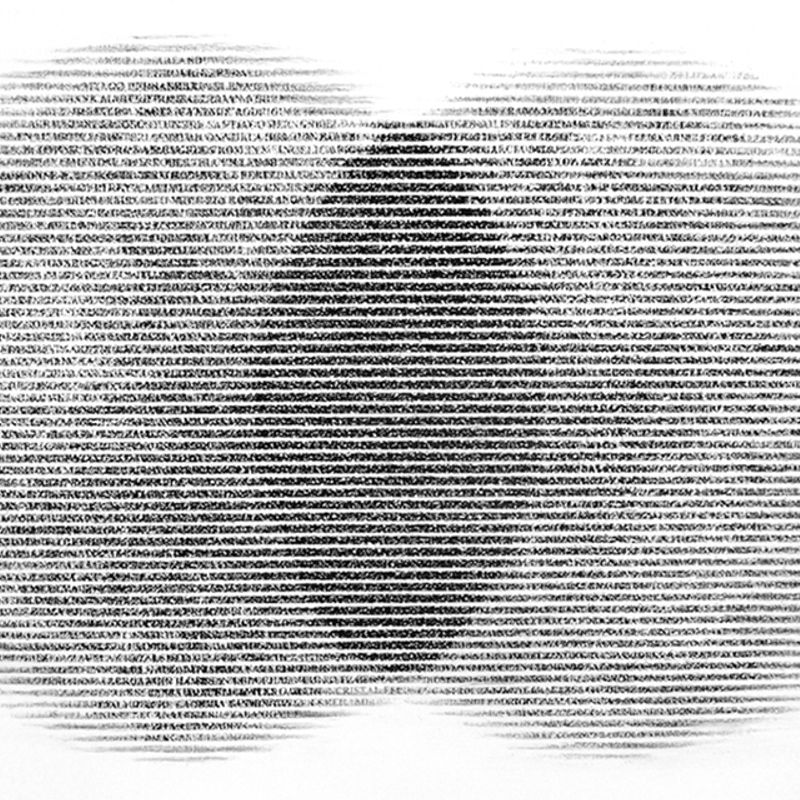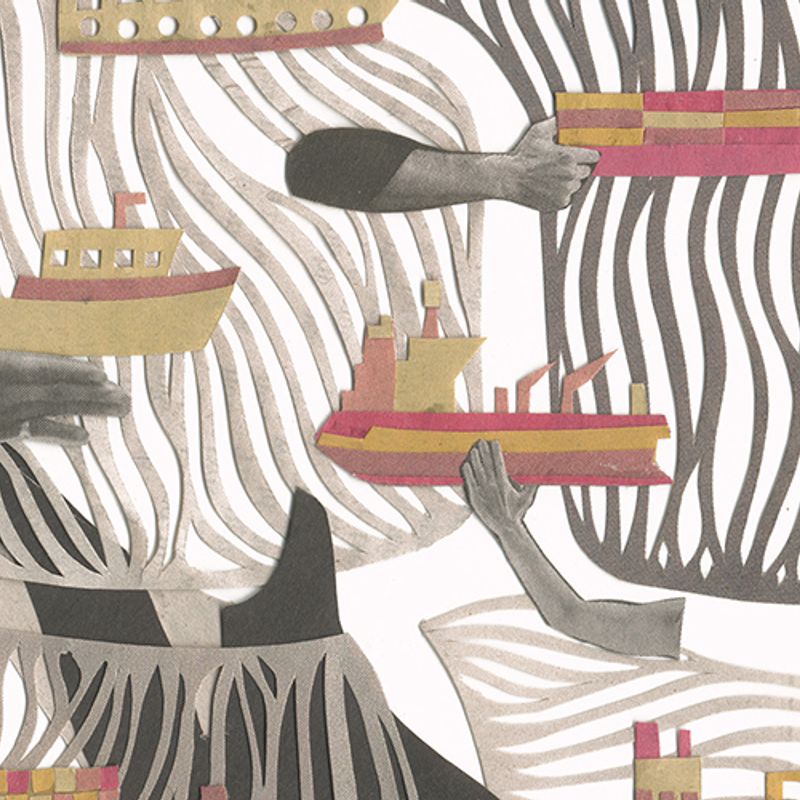Loud with Invention: An Interview with Mita Mahato
by Beth StaplesComics editor Chris Gavaler talks with Mita Mahato about in-between areas, complicating responses, bored gratification, and the exuberance she feels when making art.
Chris Gavaler: Unlike the majority of literary and artistic forms, comics does not have a single definition or set of requisite qualities, and so not all viewers will agree whether a given work is or is not a comic. Happily, your “Lullaby” falls into the exciting, contested, in-between area. Many of the conventions most associated with comics are absent: speech balloons, panels, gutters, even identifiably repeating characters. Shenandoah is publishing it as a comic—the first ever published by the magazine—but what do you consider “Lullaby”?
Mita Mahato: Working with layers of paper to construct my images means that I experiment with the comics medium in different ways than artists who work with ink. The vocabulary is similar, though. During the creative process, I’m usually thinking about panels and gutters—areas for content and areas for visual lacunae. If you look closely at “Lullaby,” you might identify images that operate as panels—like the rectangles and other shapes that represent sea and land. If we do approach these shapes as panels, then we might consider how the gutters between them function. Do they encourage readers to imagine narrative bridges, or do they suggest spatial barriers? Another way that the comics medium inspires my work is in its use of dissonant forms of signification. In most comics, that dissonance comes through the interplay of word and image. In “Lullaby,” I tried to invite it by playing with different visual signifiers—for example, the photographic hands and the more abstract, cut-paper imagery.
That is all to say that the creative process that went into “Lullaby” is indebted to the comics medium, and I’d consider it a comic. Readers might think differently—and I welcome those complicating responses. I think it’s pretty wonderful that Shenandoah is providing a platform for artists and readers alike to explore the expansive possibilities of the comics medium. And I’m thrilled that “Lullaby” will be part of that conversation.
Chris Gavaler: Comics were traditionally drawn on paper, first in pencil, then finished in black ink, with color added during the printing process. We understand your process is very different. Can you give us a sense of how you work?
Mita Mahato: My process can take a few different paths, but more often than not, I start with pencil on paper, too. Most of the visual elements you see in my work began with a sketch that served as the basis for the cut-paper images. Once I draw a “template,” I use it as a guide for cutting paper shapes that I paste together to form the final image (think of a how a sewing pattern works). Sometimes, the cutting is more instinctive than methodical—like the waves or crop rows in “Lullaby” (which were done without a template) or when I use traditional collage technique. Once a page is done, I scan it, complete any needed cleanup in Photoshop, and then print it. Because I work in layers, the scanning process retains shadow lines, which is what makes one-dimensional images appear to have texture and tooth.
Chris Gavaler: “Lullaby” is also a wordless comic. Some of your other works include words, either as narration or as speech in semi-traditional balloons, but in “Lullaby” you leave the non-narrative imagery to do all of the work. But there is a sequence, a kind of logical or at least intuitively evocative progression. Did you have a traditional story in mind? And however you began, why were words the wrong means to express it?
Mita Mahato: I had the title in mind pretty early on and it might provide a way into answering these questions. A lullaby, of course, is a song that aims to put one to rest, sometimes (as in “Rock-a-bye Baby”) slipping into dirge territory and threatening ultimate rest. The images that sing the dark song of this lullaby were inspired by the plight of the southern resident killer whales, which are endemic to the Puget Sound region where I live. Human activities, especially those related to river management and chemical pollution, have brought the population of this unique culture of whales down to fewer than eighty individuals. Because the song that “Lullaby” sings is about humanity’s undeniable role in species extinction, I wanted to draw attention to collective actions over individual voices. I wanted to spoil the consumer’s daydream of quiet seasides. I wanted to expose that the lullaby we are singing to these whales is a deadly hum made up of pleasures and habits that have become so everyday to us that we don’t register their impact outside of our own, bored gratification. The absence of words gave me space to orchestrate a visual clatter; I wanted the pages to be loud with the invention, industry, and perspective of free enterprise. Even when we aren’t speaking, our presence is constant, crass, deafening.
Chris Gavaler: “Lullaby” is both intensely sad but also incredibly beautiful. How do you see those two emotions—delight and sadness—working together in your work?
Mita Mahato: I think that any emotion that my art elicits is probably shaped by the very strong feelings that I have about the fundamental and insistent relationship between form and content. Because I gravitate toward themes of loss, I tend to use old, discarded newspaper, magazines, packing tissue, maps, etc. to create the images in my work. Commingling with this generally mournful content, however, is the exuberance I feel in the process. There is something so joyful about taking old paper that is bound for the recycling bin, or paper that is designed for a purpose that is no longer in play, and transforming it for new use. What you may be seeing in “Lullaby” is this dual action that I bring to my work—to grieve and to create. In “Lullaby,” all the cut-paper elements (the sea panels, the whales, the boats, the hands, etc.) are made from the color patches in newsprint advertisements or the grayscale images of photojournalism. I like that the resulting images materialize both bereavement and jubilation in their exhibition of new imagery born out of cut and pasted remains. Loss does not always entail transformation, but art made in response to it might at least encourage some pause and some reflection.

